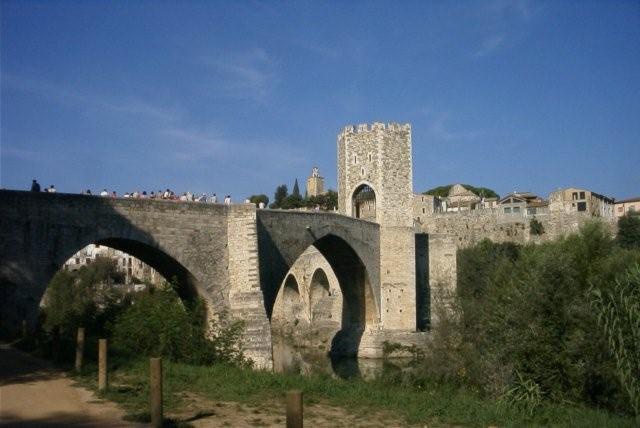| Besal˙ | |
|
|
|
|
1/2 Day |
|
|
Besal˙, in the
province of Girona, is a monumental example of the Catalan Middle Ages.
Located in the region of La Garrotxa, the town is only steps away from the
spectacular scenery of the Volcanic Zone of La Garrotxa Nature
Reserve, on the last spurs of the eastern section of the Pyrenees
of Girona.
Cobbled streets and fašades are the most distinguishable feature of the city centre, as can be seen in many spots. The rich medieval legacy brings the visitor closer to both religious and civil constructions, and to the vestiges of a Sephardic quarter that used to exist in this town during the Middle Ages. Civil architecture works include the 12th-century Romanesque bridge that crosses the FluviÓ river; the building of C¨ria Real, devoted to law enforcement; and the residence of CornellÓ, with a great Romanesque arcaded gallery. Among religious monuments, we must point out the churches of Sant Pere, Santa MarÝa, and Sant Vicenš, alternating Romanesque and Gothic elements. Also worthy of note is the lavish ornamentation of the church of Sant JuliÓ (17th century). In addition, in the Jewish quarter we can visit medieval public baths that were devoted to Hebrew ritual ablutions.
|
|
